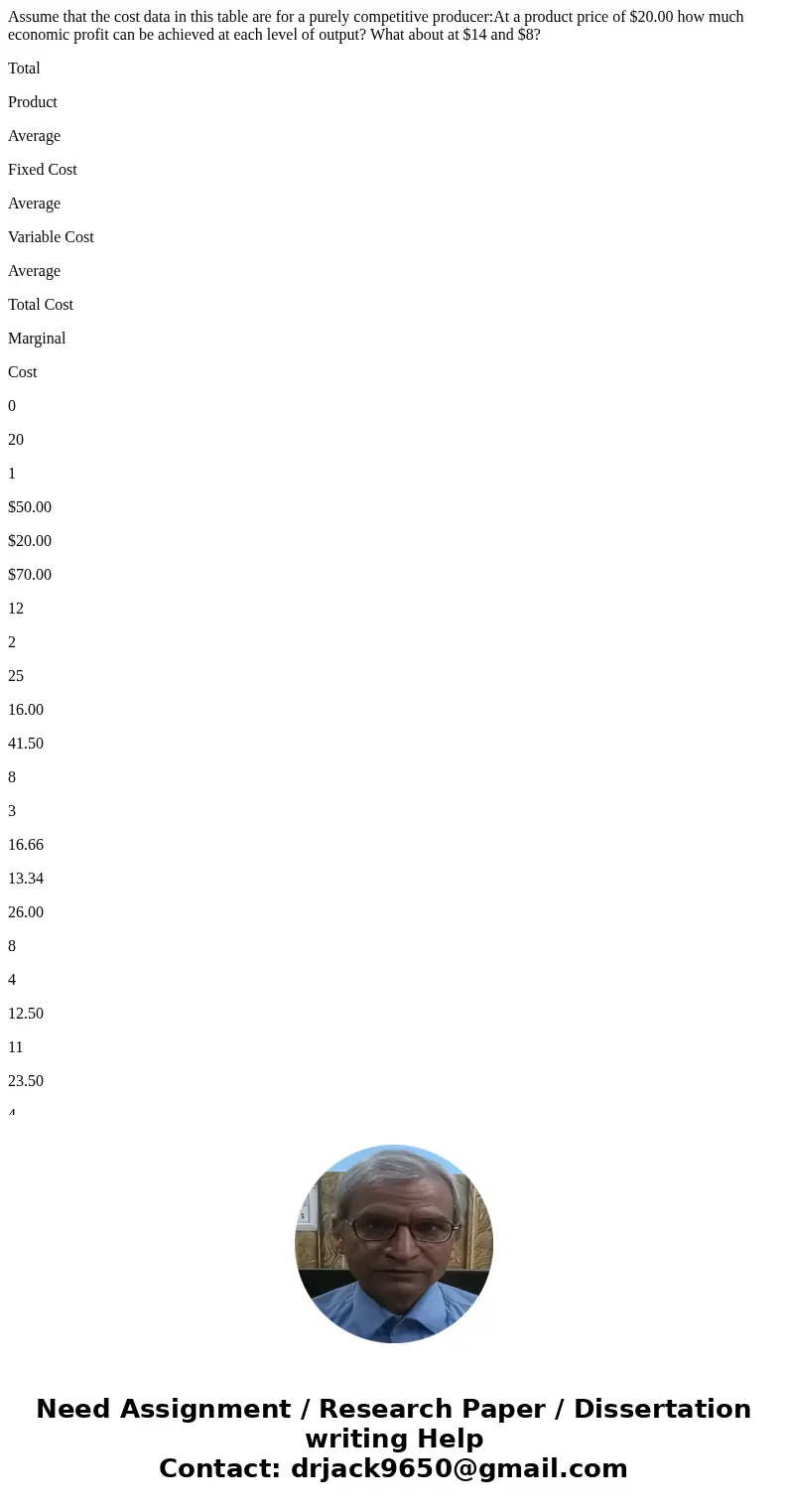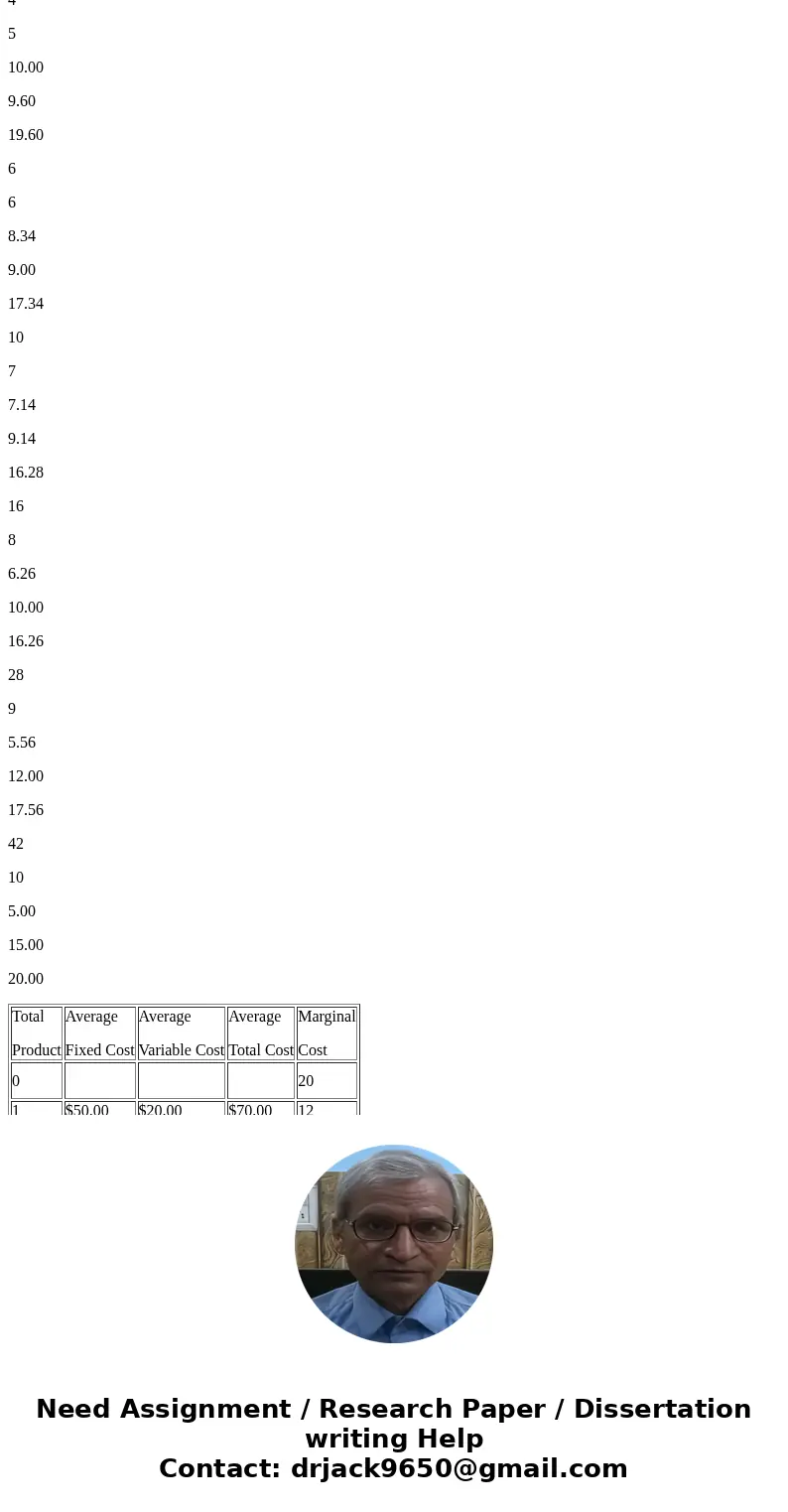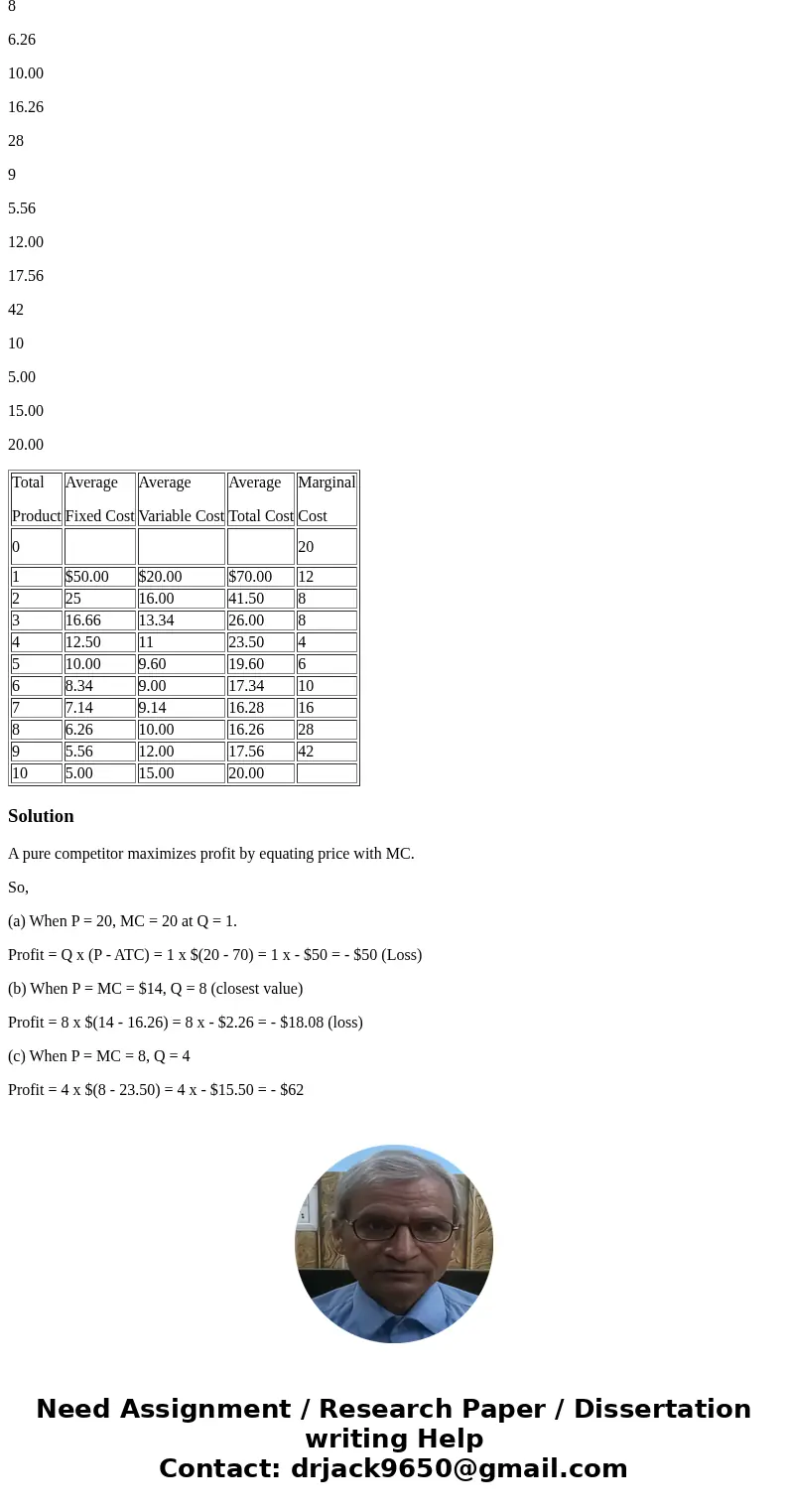Assume that the cost data in this table are for a purely com
Assume that the cost data in this table are for a purely competitive producer:At a product price of $20.00 how much economic profit can be achieved at each level of output? What about at $14 and $8?
Total
Product
Average
Fixed Cost
Average
Variable Cost
Average
Total Cost
Marginal
Cost
0
20
1
$50.00
$20.00
$70.00
12
2
25
16.00
41.50
8
3
16.66
13.34
26.00
8
4
12.50
11
23.50
4
5
10.00
9.60
19.60
6
6
8.34
9.00
17.34
10
7
7.14
9.14
16.28
16
8
6.26
10.00
16.26
28
9
5.56
12.00
17.56
42
10
5.00
15.00
20.00
| Total Product | Average Fixed Cost | Average Variable Cost | Average Total Cost | Marginal Cost |
| 0 | 20 | |||
| 1 | $50.00 | $20.00 | $70.00 | 12 |
| 2 | 25 | 16.00 | 41.50 | 8 |
| 3 | 16.66 | 13.34 | 26.00 | 8 |
| 4 | 12.50 | 11 | 23.50 | 4 |
| 5 | 10.00 | 9.60 | 19.60 | 6 |
| 6 | 8.34 | 9.00 | 17.34 | 10 |
| 7 | 7.14 | 9.14 | 16.28 | 16 |
| 8 | 6.26 | 10.00 | 16.26 | 28 |
| 9 | 5.56 | 12.00 | 17.56 | 42 |
| 10 | 5.00 | 15.00 | 20.00 |
Solution
A pure competitor maximizes profit by equating price with MC.
So,
(a) When P = 20, MC = 20 at Q = 1.
Profit = Q x (P - ATC) = 1 x $(20 - 70) = 1 x - $50 = - $50 (Loss)
(b) When P = MC = $14, Q = 8 (closest value)
Profit = 8 x $(14 - 16.26) = 8 x - $2.26 = - $18.08 (loss)
(c) When P = MC = 8, Q = 4
Profit = 4 x $(8 - 23.50) = 4 x - $15.50 = - $62



 Homework Sourse
Homework Sourse